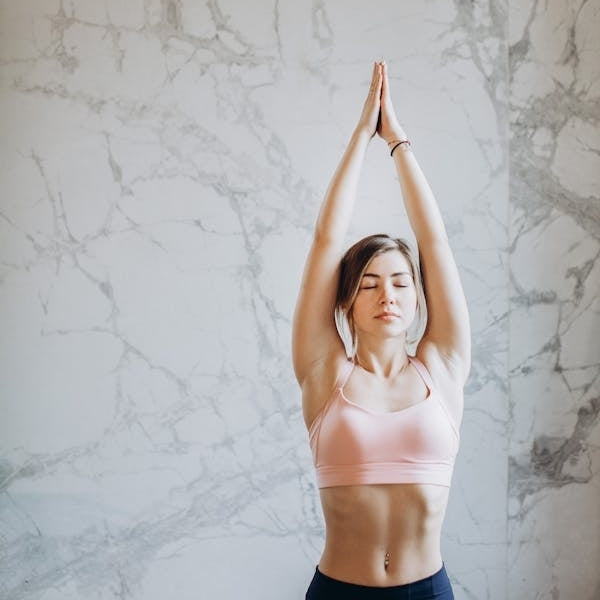What is the cartilage?
Cartilage is an elastic structure wrapped around the outside of the bone. The thickness of cartilage varies from person to person and usually ranges from 3-7 mm. In general, the thicker the cartilage, the longer the life of the joint. All joints in the human body are covered with it. Cartilage is like the shock absorber of a car, and it is similar to a layered sponge. The layers are dispersed slightly to relieve the wear and shock caused by joint movement.
Once the cartilage is damaged, the person can become immobile. If cartilage maintenance is ignored, it may lead to a degenerative bone disease characterized by progressive damage to the joint, such as osteoarthritis, rheumatoid arthritis, cervical spondylosis, lumbar disc herniation, bone hyperplasia, etc. Therefore, we must understand and pay attention to the prevention and treatment of joint health. Cartilage defects remain a challenging clinical problem, and the current treatment is unsatisfactory.

How to stimulate the regeneration of joint cartilage?
Although bones look hard, they are living tissues that repair themselves naturally. It should be noted that although cartilage is alive, it has no nerve and blood supply. All repair and maintenance are completed by chondrocytes specialized cells in the cartilage. In general, the regenerative ability of cartilage before age 30 is present, and it is possible to repair it after injury. After the age of 30, cartilage ages and thins physiologically. The damaged cartilage can hardly regenerate by middle age, especially after age 50. Regeneration of cartilage has always been a hot spot in research. In recent years, photobiomodulation (PBM), also known as red light therapy, emerged as a ray of hope for arthritis patients. Red light therapy has a long history, and robust scientific evidence supports its application in arthritis management.
Can red light therapy regenerate cartilage?
Photobiomodulation (PBM) is the metabolic and cellular response produced in living cells upon red and near-infrared light exposure. Red light therapy is an advanced treatment technology extensively studied in osteoarthritis rehabilitation1. Red light acts on cartilage through precise regenerative and repair mechanisms.Chondrocytes stimulation
When joints are irradiated with red and near-infrared light therapy, it triggers chondrocyte production. Chondrocytes are the primary cells distributed in the cartilage tissue that maintain joint wear and tear. Once cartilage cells get damaged, it causes swelling and pain in the joints, accelerating the progression of osteoarthritis. Red light acts on chondrocytes, which increases extracellular matrix component production, such as collagen and proteoglycans, and growth factors to thicken cartilage2.
Matrix metalloproteinase modulation
Matrix metalloproteinase (MMP) is a collagenase that controls and regulates the extracellular matrix (ECM) and collagen degradation in joint cartilage. In the process of cartilage homeostasis, the balance of anabolic reactions (the production of collagen) and catabolic reactions (the destruction of cartilage structure by MMP) helps to maintain the normal physiological structure and function of joint and cartilage loss in osteoarthritis is usually caused by imbalance. Scientific studies have demonstrated that "low-level laser therapy (LLLT) exerts a regulatory effect on matrix metalloproteinase (MMP) expression in joints to maintain the balance between breaking down old cartilage tissues and regenerating healthy ones. 3"

Joint metabolism increase
Under the stimulation of factors such as hypoxia (low oxygen supply), stress load, and chronic inflammation, a large amount of reactive oxygen species (ROS) is generated in the mitochondria of chondrocytes, causing oxidative stress and metabolic disorders. ROS accumulation can lead to increased expression of inflammatory factors, chemokines, and matrix metalloproteinases, thereby promoting the degradation of the cartilage matrix and destroying cartilage homeostasis. Photobiomodulation activates nitric oxide (NO), and mitochondria within chondrocytes and increases cellular energy (ATP) and metabolism. Red light therapy can precisely enhance the ATP and NADPH levels in degenerating chondrocytes and maintain sufficient endurance, thereby reshaping the anabolic environment for natural tissue repair in damaged joints.

Anti-inflammatory
The immune responses are increasingly recognized as a critical factor influencing cartilage repair. It has a negative and positive regulating effect on regeneration and repair. If inflammatory factors persist, it accelerates the degradation of the cartilage matrix. The role of photobiomodulation therapy in reducing swelling and inflammation has been well-documented in animal models and clinical trials. Red light therapy produces various pro-inflammatory factors to remove dead cartilage cells by phagocytosis4. During the repair phase, immune cells secrete anti-inflammatory factors and chondrocytes, which inhibit inflammation and promote cartilage repair in arthritis.
Pain reliever
We know that there is no direct contact between bones; cartilage protects our joints from damage, and without cartilage, the result is pain. Degradation of cartilage smooth, low-friction surfaces of bone causes sharp pain in arthritis. Studies demonstrated that red light therapy reduces pain and improves the range of motion in arthritis patients. Red light therapy has a potent analgesic effect to relieve muscle and bone pain in arthritis and treat acute/chronic soft tissue injury. It directly stimulates blood circulation, releases endogenous endorphins, and adjusts the level of pain-relieving neurotransmitter serotonin. In 2017, a study published in the Journal of Laser Medicine Sci indicated that red light therapy effectively reduced pain and improved cartilage thickness through biochemical changes in arthritis patients5.

Nourishing cartilage with red light therapy protects joints
Although arthritis does not kill people like cancer, it causes physical disability, increased medical costs, and reduced quality of life. Apart from aging, arthritis is also commonly caused by sports injuries, obesity, aging, etc. From regeneration to repair, red light therapy cells open a new door for arthritis treatment. It is non-invasive and painless, penetrates deeply, offers a rapid cure, and has no side effects. Try red light therapy today to maintain healthy cartilage and bone health!
References and Citations:
[1] Khumaidi, M. A., Patrusi, I., Nusdwinurngtyas, N., Islam, A. ., Gunawn, W. B., Nrkolis, F., & Taslim, N. A. (2022). Is low-level laser therapy (LLLT) effective for patients with knee joint osteoarthritis? Implication & strategy to promote laser therapy. Frontiers in bioeng & biotech, 10, 1089035.
[2] Song, W., Zhang, H., Pan, Y., Xia, Q., Liu, Q., Wu, H., Du, S., Zhang, F., & Liu, H. (2023). LED 630 nm irradiation alleviates collagen-induced arthritis in mice by inhibition of NF-kb mediated MMP production. Photochemical & photobiological science official journal, 22(10), 2271–2283.
[3] Alves, A. C., Albertni, R., dos Santos, S. A., Leal-Junior, E. C., Santana, E., Sera, A. J., Silva, J. A., Jr, & de Carvalho, P.deT. (2014). Effect of LLLT therapy on MMP-2 and MMP-9 production and percentage of collagen types I, III in a papain cartilage injury model. Lasers in medical sci, 29(3), 911–919.
[4] Palota, R. C., Bjordal, J. M., Frigo, L., Leal Junior, E. C., Teixera, S., Marcos, R. L., Ramos, L., Messias, F.deM., & Lopes-Martins, R. A. (2012). Infrared 810-nm, low-level laser therapy (LLLT) on rat knee inflammation. Lasers in medical sci, 27(1), 71–78.
[5] S, G. N., Kamal, W., George, J., & Mansor, E. (2017). Radiology & biochemical effects (CTX-II, MMP-3, 8, and 13) of LLLT in chronic osteoarthritis. Lasers in medical science, 32(2), 297–303.













 Small
Small

 Moderate
Moderate

 Moderate
Moderate

 Moderate
Moderate

 Full
Full



